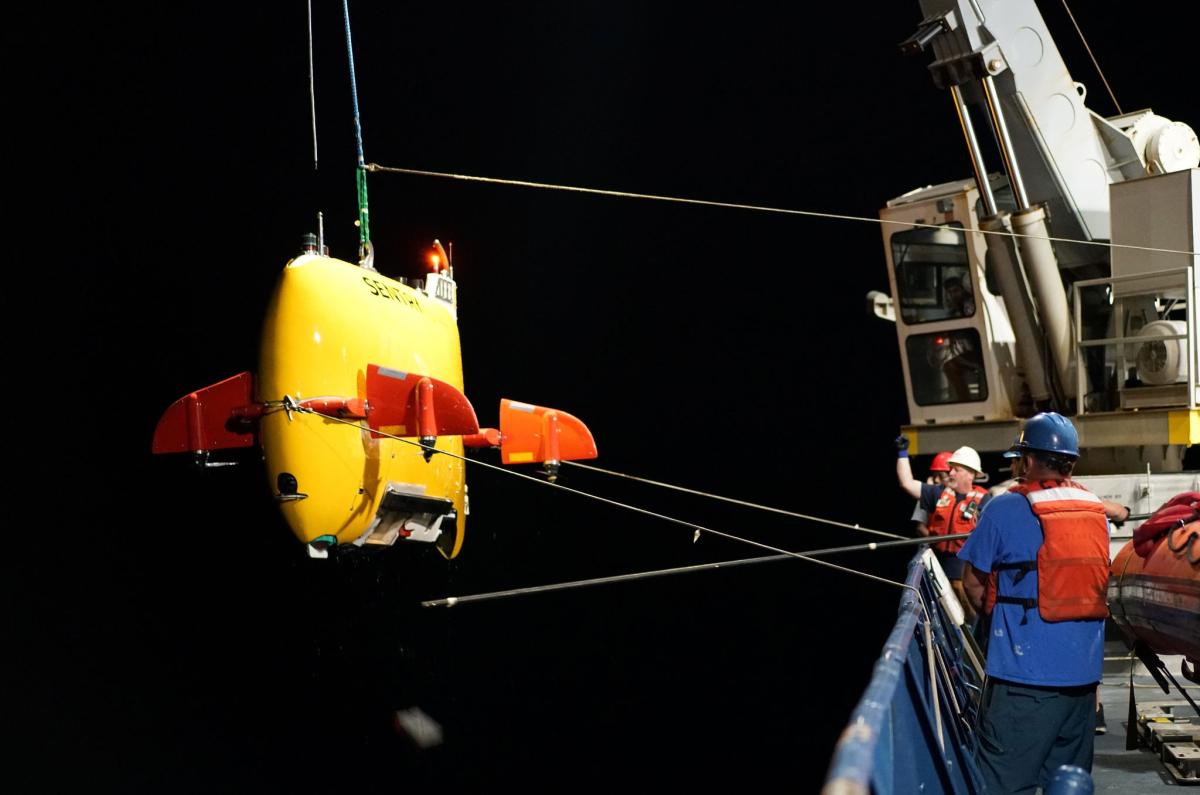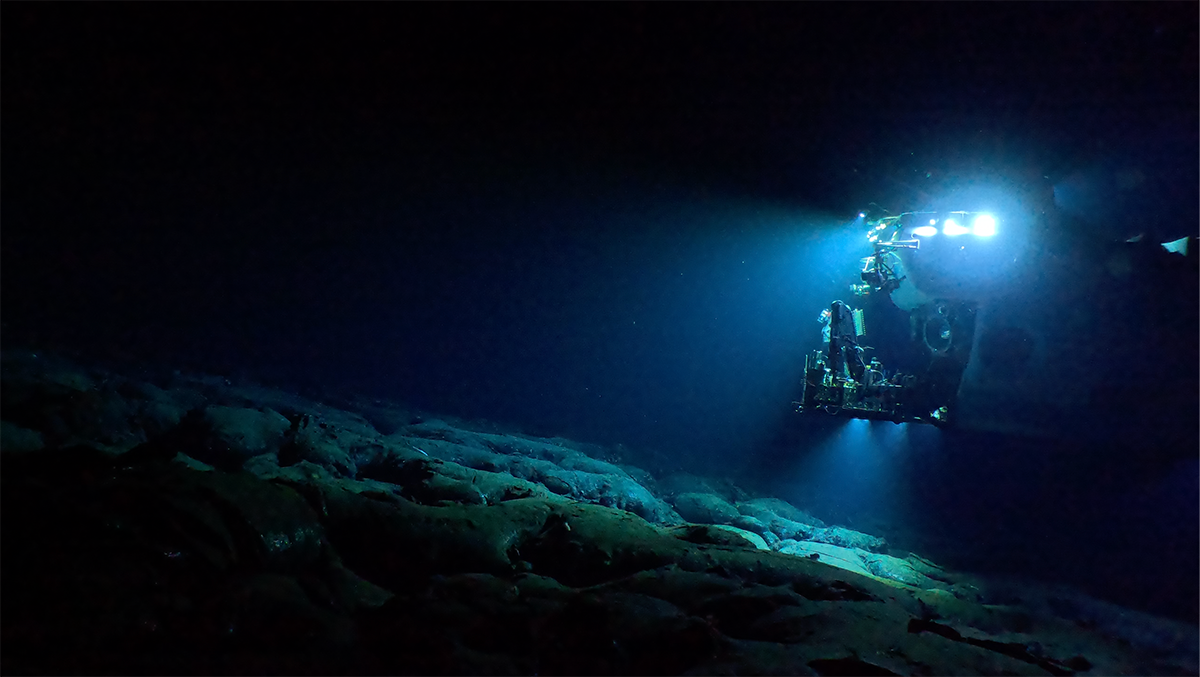Working together, a deep-sea robot and human occupied submarine led the discovery
The pace of discovery in the oceans leaped forward thanks to teamwork between a deep-sea robot and a human occupied submarine leading to the recent discovery of five new hydrothermal vents in the eastern Tropical Pacific Ocean.
Scientists diving in Alvin first discovered hydrothermal vents in 1977 while exploring an oceanic spreading ridge north of the Galápagos Islands. Hydrothermal vents are rich in chemicals that supply energy to animal life, fueling rich and productive ecosystems. The discovery re-shaped scientists’ understanding of the conditions capable of supporting life on Earth and potentially elsewhere in the solar system. The research program at EPR is focused on learning more about volcanic and hydrothermal systems in the deep-sea where new seafloor is formed and where unique communities of animals thrive in high-pressure and high-heat environments.
"The mid-ocean ridge accounts for more than 75% of all volcanic activity on our planet,” said Thibaut Barreyre, a co-lead scientist on the expedition from CNRS, Univ Brest, France and an expert in thermal measurements and modeling of hydrothermal vents. “It is dotted with thousands of deep-sea hot springs like these, which all together extract 10% of the Earth’s total internal heat. We want to increase our understanding of how hydrothermal vents release heat and chemicals as they flow through the seafloor and affect the global ocean."
"The new Sentry maps allow us to see the very important details of lava flows that erupted in the deep ocean and target them for collecting rock samples, just like geologists do on land,” said Daniel Fornari, a co-lead scientist on the expedition from WHOI and a marine geologist who has been involved in EPR research for more than 40 years. “These new perspectives and the analyses of rock samples will let us figure out how quickly the lava erupted, how far it traveled, and the impacts deep sea lava eruptions have on hydrothermal venting."
“By jointly operating these two cutting-edge deep-sea submersibles, we are able to make remarkable new discoveries about how seafloor in the deep oceans is constructed, in some of the most inhospitable environments on Earth,” said Ross Parnell-Turner, a co-lead scientist on the expedition from the Scripps Institution of Oceanography and a marine geophysicist specializing in high-resolution seafloor mapping of the volcanic and hydrothermal terrain.
Scientists plan to continue studying hydrothermal activity and volcanism along the East Pacific Rise in a follow-up expedition that will also use Sentry and Alvin to expand their understanding of the geophysical, chemical, and biological processes that shape our planet and support life in the deep, dark recesses of Earth’s Ocean.








